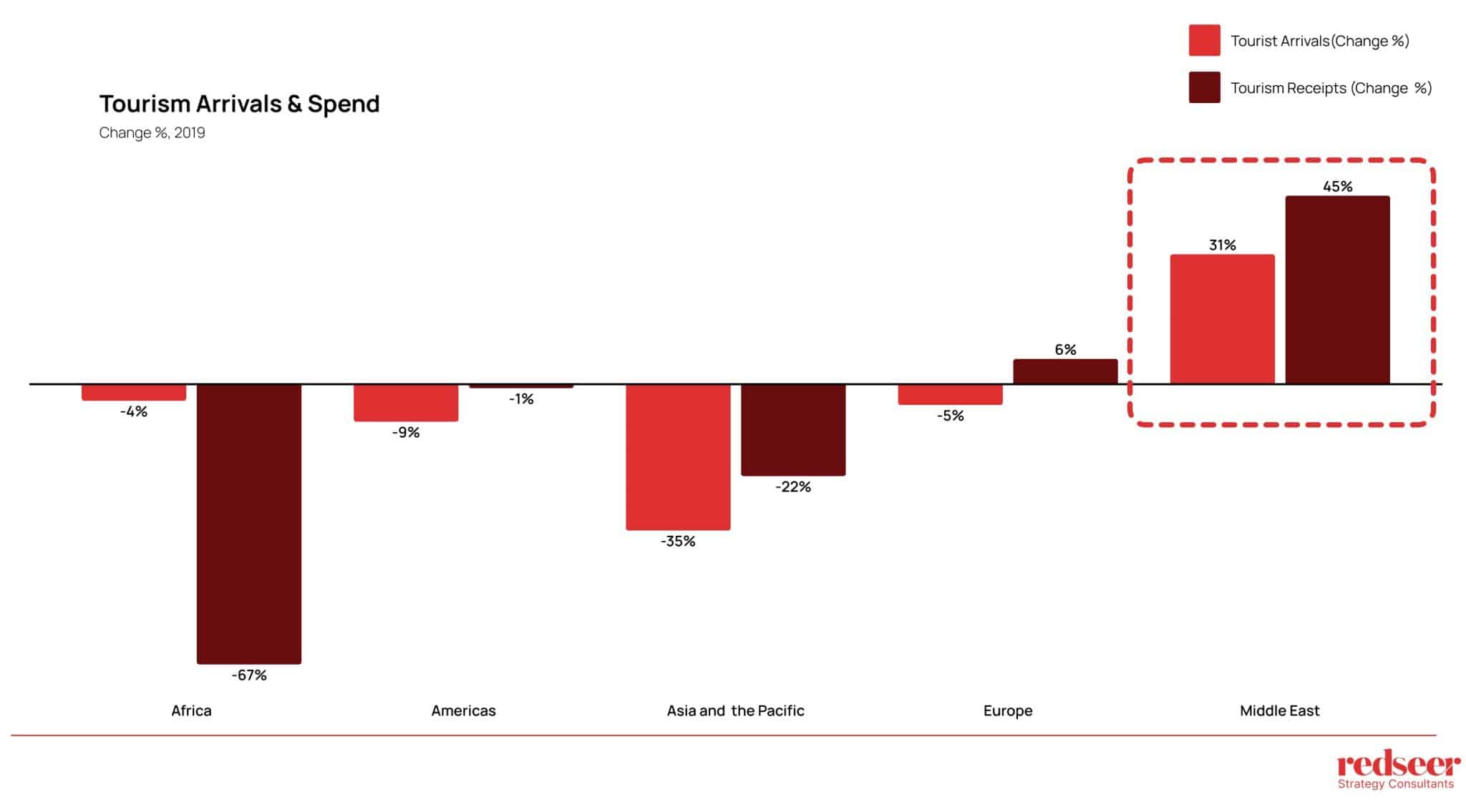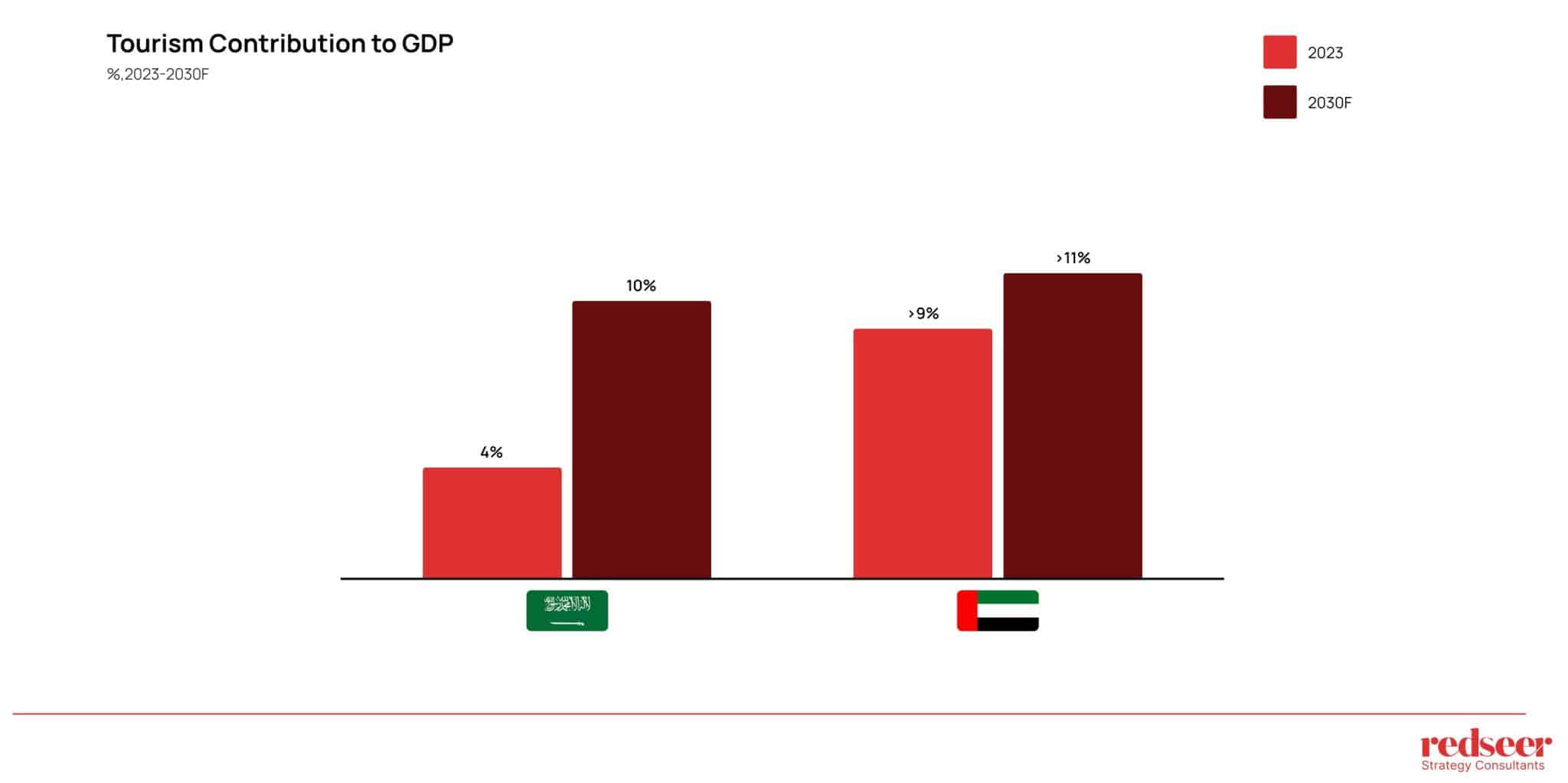The Middle East has emerged as a leader in the global recovery of international tourism, boasting a 31% growth above pre-pandemic levels, as reported by the UNWTO. This success underscores the region’s strategic vision, driven particularly by the UAE and Saudi Arabia’s focused policies. Such proactive efforts, including ambitious 2030 tourism objectives and expanding domestic tourism initiatives, are set to fuel further economic growth across the region.
Read on to discover how these strategies are reshaping the Middle East’s economic landscape.
1.Middle East has been a global leader in the recovery of international tourism

The Middle East has been a global leader in the recovery of international tourism.The region experienced a remarkable 31% growth above pre-pandemic levels, the highest among all regions, according to the UNWTO. This surge contrasts with global trends of international tourism. For instance, Europe and the Americas recovered 95% and 91% respectively, while the Asia-Pacific region reached only 65% due to prolonged lockdowns.
The rapid rebound in the Middle East is driven by strategic initiatives, tourism-friendly policies, and investments aimed at enhancing the region’s appeal as a global travel destination.
2. This resilience is also reflected in the rising for World Economic Forum (WEF) Tourism Index rankings for the UAE and Saudi Arabia…
UAE has significantly improved its position in the World Economic Forum’s (WEF) Travel & Tourism Development Index, moving from 25th place in 2019 to 18th in 2024, marking a 4.4% increase that establishes it as the leading country in the MENA region. Meanwhile, Saudi Arabia advanced from 50th to 41st place in 2024, reflecting a 5.7% increase in its index score.
While UAE is the top performer in the region, Saudi Arabia has shown the most regional improvement in the index score and ranking since 2019.
3. …showcasing the impact of strategic policymaking and a clear vision for tourism
Middle East’s approach to tourism policymaking stands out globally due to:
A) Proactive and Strategic Policymaking
Middle Eastern countries have demonstrated a strong commitment to setting clear and ambitious tourism targets. For instance, UAE aims to double tourism revenue by 2031. Saudi Arabia’s Vision 2030 also, focuses on tourism as a key pillar of economic diversification.
B) Significant Financial Commitment
Saudi Arabia has pledged over $800 billion for tourism sector development by 2030; This investment exceeds the amounts allocated by many developed nations for similar purposes.
C) Innovation in Economic Models
The region integrates innovative economic models to foster tourism growth. For example, we are already seeing Public-private partnerships are driving progress. These partnerships allow for the blending of government vision with private sector efficiency, enabling large-scale projects.
By combining proactive planning, massive financial investments, and innovative economic strategies, Middle Eastern countries are creating a model of sustainable growth that many other nations may look to emulate.
4. Ambitious 2030 tourism goals, coupled with expanding domestic tourism will contribute to economic growth across the region

Both UAE and Saudi Arabia are strategically positioning themselves as key players in the global tourism industry, with ambitious goals set for 2030.
In the UAE, the government has outlined an aggressive roadmap for the tourism sector, focusing on transforming cities like Dubai and Abu Dhabi into global tourism hubs. The nation aims to attract >30 million visitors annually by 2030.
Similarly, Saudi Arabia is making significant strides under its Vision 2030 initiative. The Kingdom is opening to international visitors, offering unique experiences such as visits to ancient heritage sites like Al-Ula, the future mega-city of Neom, and the Red Sea Project.
Domestic tourism is also expanding, driven by government efforts to foster a sense of national pride and engagement through initiatives like the “Saudi Seasons” festivals, which encourage locals to explore the country.
The combined growth in both international and domestic tourism will contribute not only to job creation but also to the growth of related industries such as hospitality, retail, and entertainment.
As tourism becomes a central pillar of economic diversification for both the UAE and Saudi Arabia, the sector’s impact will resonate throughout the region.







